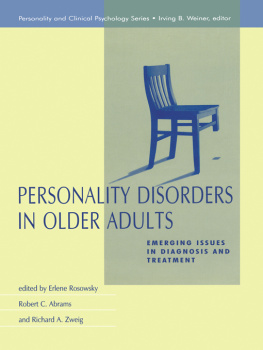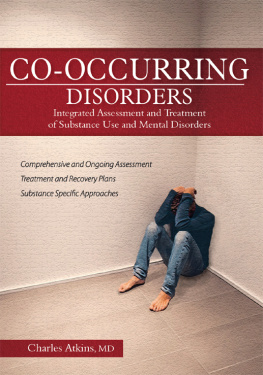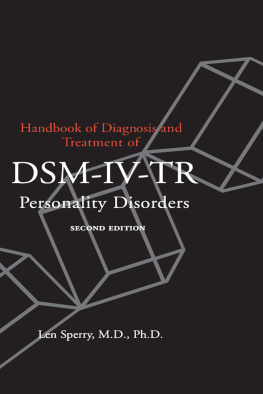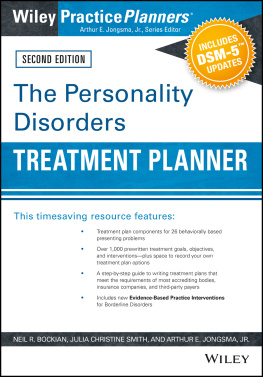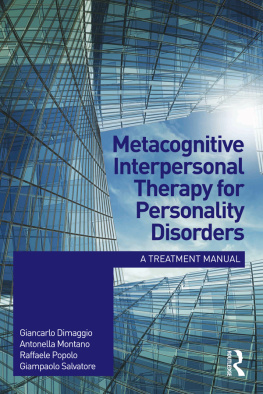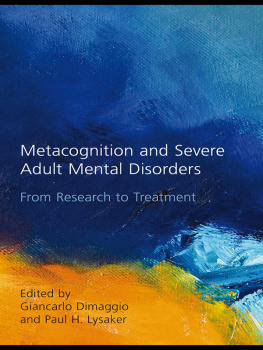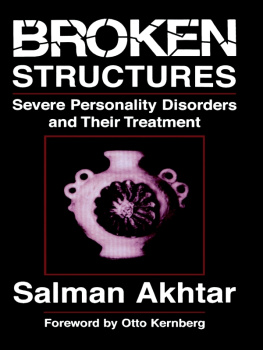AFTERWORD
Personality Disorders in Late Life and Public Policy: Implications of the Contextual, Cohort-Based, Maturity, Specific Challenge Model
BOB G. KNIGHT, PHD
University of Southern California
In order to highlight the ways in which personality disorders of late life become policy relevant, a brief summary of observations about the role of personality disorders in younger adults is useful. Under the DSM multiaxial diagnostic system, personality disorders fall on Axis II. This placement is intended to call attention to the role of personality disorders in complicating the presentation, diagnosis, and treatment of Axis I disorders. It can be thought of as analogous to the role of the medical disorders placed on Axis III, which cause or complicate the Axis I disorder. In some individuals, the Axis I disorder may be caused by, or an aspect of, the Axis II disorder.
This distinction can affect mental health treatment of younger adults in a variety of ways. In general, it is thought that the treatment of Axis II disorders takes longer than the treatment of Axis I disorders. For younger adult populations, Kopta, Howard, Lowry, and Butler (1994) found a median effective psychotherapeutic dose of more than 104 sessions for characteriological symptoms as compared to 5 sessions for acute distress symptoms and 14 for chronic distress symptoms. Treating Axis I disorders when an Axis II disorder is present is also thought to take longer, and this has been demonstrated in older adults (Thompson, Gallagher, & Czirr, 1988). In clinical discussion of cases, Axis II disorders most frequently arise as a topic when the therapist is experiencing difficulty with the client. Axis II disorder clients tend to evoke a range of emotions in therapists including anger, depression, and boredom.
An aspect of the move toward managed care and, in general, of the move toward regulating access to psychotherapy has been a general policy that thirdparty payers will reimburse for the acute, presenting Axis I disorder, but not for personality reorganization. This policy seems to cut across private insurance and public insurers (Medicare, Medicaid). One policy issue for all ages in mental health care is whether there should be longer allotments of therapy visits for persons with Axis II diagnoses for the treatment of depression than for those without Axis II disorders.
ISSUES SPECIFIC TO LATE LIFE
For the past several years, I have used the framework of the contextual, cohortbased, maturity, specific challenge model (CCMSC) to consider the need to adapt psychotherapy for work with older clients (Knight, 1996). The model is also useful to raise questions about the potentially specific issues of personality disorders in later life.
Context
As noted in both chapters in this section, the social context of older adults poses challenges for persons with personality disorders and may render persons with strong traits dysfunctional for the first time in later life. As noted by Molinari, illness and resultant embeddedness in the health care system with its different set of rules and relationships is difficult for persons with Axis II diagnoses. In their turn, persons with Axis II diagnoses are challenging to health care professionals. In my clinical experience, a common reason for referral of older clients from physicians and from medical clinics has been excessive dependency and/or the hostile-dependent relationship characteristic of the Cluster B disorders.
This recognition, if general, forms another target group to consider when planning mental health services for older adults, especially in the blended medical-psychological context of managed care practices. That is, in addition to looking for persons with depressed mood, anxiety, and dementia, early identification of personality disorders of older adult patients with personality disorders would be an important early intervention strategy. By early identification and planning intervention strategies that take the personality disorder into account (e.g., letting psychotherapists rather than physicians manage the patients dependency needs), unnecessary medical visits and unneeded staff frustration could be avoided. It would be an issue of considerable policy significance to determine how much excess medical utilization is due to Axis II disorders by older adults rather than Axis I. It seems plausible to hypothesize that the cost, and therefore potential cost savings, could be quite large.
, this volume) note, the nursing home is home as well as health care facility. Difficult patients often have Axis II disorders or traits: demanding of staff time, eliciting anger, and playing lets you and her fight. At present, the typical solution appears to be ejecting the offending patient from the facility. As noted by the authors, a more responsible approach is to intervene in order to effectively manage the patient. A key policy issue is how to distribute the costs of care for such difficult patients so that the inexpensive answer for individual nursing homes (patient discharge) does not become an expensive answer for the system of care and the third-party payer (e.g., Medicare or Medicaid). From the system perspective, such patients go through multiple admissions and discharges (with attendant assessments and other costs), often with time in acute medical or psychiatric facilities and intense case management costs with each move. However, for the individual units of the system, it becomes a game of hot potato with each nursing home or hospital winning by keeping the patient moving and not being last in line.
Cohort-Based Issues
Cohort differences are the differences between generational groups (e.g., GI Generation vs. The Boomers) that are often mistaken for developmental differences. For example, Abrams and Horowitz (, this volume) cite a study by Eysenck (1987) on age differences in neuroticism and extroversion. Schaie (1995), using the sequential longitudinal designs of life-span developmental psychology, noted that cohorts from 1900 to WWII declined in extroversion, whereas cohorts since then have increased. In the same studies, he found that reactivity to threat, likely a facet of the personality factor neuroticism, has increased across cohorts since the beginning of the 20th century.
These findings about personality factors and facets suggest a possibility that has not, to my knowledge, been tested: Are there cohort differences in the prevalence of personality disorders? It seems plausible (to this author, anyway) that pre-Boomer generations were higher in obsessive-compulsive, avoidant, and paranoid disorders, whereas Boomers may be more prone to Cluster B disorders. Perhaps Generation X is shifting more toward Cluster C. Because individuals mature and develop adequate adjustment or personality disorders in specific socio-historical contexts that change over time, cohort-specific prevalence is possible. Only time and research can tell us if it is empirically true. (See Zweig and Hillman, , this volume, for review of longitudinal personality research.)
This hypothesis has two implications. One is that ideas about changes in personality disorders with maturation through adulthood, based on cross sectional studies and cross-sectional clinical observations, confound age and cohort; theory , if the effect is due to cohort differences, older clients of a decade or two hence will have higher rates of paranoid and narcissistic disorders. If it is due to age, then the current Boomers would move from narcissism to higher rates of schizoid and self-defeating personality disorders.

